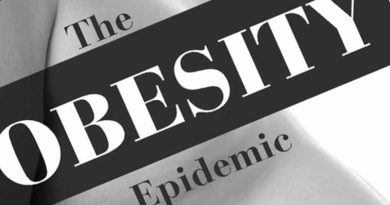BMI – from adults to children
Body Mass Index (BMI) has been in the news recently. I’ve picked out two stories from the past fortnight on this little formula – because that’s all it is – a person’s weight in kilograms, divided by their height in meters squared.
The evidence base for BMI
Just as other public health advice (5-a-day, 14 and 21 alcohol units, 150 minutes exercise a week, 30% of calories from fat, 10% of calories from saturated fat…) is not evidence based, so BMI categories are not evidence based. They are also numbers ‘plucked from thin air’.
Here’s an extract from the fabulous Doctoring Data by the brilliant Dr Malcolm Kendrick, where he traces the origin of the notion that a BMI of 30 = obese:
“The figure itself was agreed at a meeting in Geneva, which generated a long and very boring publication. It stretched to more than six hundred pages. I know, I read it. Somewhere about page four hundred and something I finally came across the passage that I had been hunting for. It was pretty much as I had expected:
‘The method used to define BMI cut-off points has been largely arbitrary’.
Largely arbitrary. An interesting combination of words. I suppose it sounds a bit better than ‘plucked from thin air.’ Or… ‘we just made it up, because we felt that we had to say something.’ The world is gripped with terror that so many of us are now obese. I call it the ‘largely arbitrary’ epidemic. (p245)
BMI should only be used as a guide and never used as a precise cut off scale where, for example, 24.9 is normal and 25 is overweight. An example of where it can help as a guide is if someone has been eating real food/managing carbohydrate intake for some time and is wondering if they have reached their natural weight. A BMI over 30 suggests that they may not be at natural weight (unless they have rarely been below a BMI of 30 for their adult life); a BMI under 25 suggests that they may be close to natural weight. That’s how broad a ‘rule of thumb’ BMI should be used for.
BMI works less well with taller people; less well with men (probably because the height is not adjusted for well enough) and works barely at all with athletes. The Welsh rugby captain, Sam Warburton, along with most international rugby players would be classified as obese. This is clearly absurd.
The height deficiency of BMI is a very important one for when we move from adults to children. Kylie Minogue is estimated to be 152cm tall and 46kg, giving her a BMI of 19.9. Nicole Kidman is estimated to be 180cm tall and 58kg, giving her a BMI of 17.9. If Nicole gains 2kg, her BMI goes up 0.6 BMI points to 18.5. If Kylie gains 2kg, her BMI goes up 0.9 BMI points to 20.8. The BMI is far more sensitive to weight in the shorter person.
The first story: adults
With the deficiencies of BMI in mind, the first story should come as no surprise. The first week in February saw quite a bit of coverage for a study that had been published in the International Journal of Obesity.
The context of the American study was an important one – employees can face penalties from health insurance companies if they fail to meet arbitrary criteria, such as a specified BMI. The study examined over 40,000, nationally representative, adults against health measures such as blood pressure, triglyceride levels, glucose levels, insulin resistance and markers for heart damage. Nearly half of overweight individuals, 29% of obese individuals and 16% of individuals with a BMI over 35 or 40 were metabolically healthy. Moreover over 30% of normal weight individuals were cardiometabolically UNhealthy.
The paper concluded that to make judgements purely on the basis of BMI was inadvisable. Hear, hear.
The second story: children
The BMI story that was in the news recently about children is not a new story. In fact it appears every few weeks. The papers love to feature a child, who doesn’t look overweight, with the outraged parent who has just received a letter from the school saying that their child is overweight.
Here is outraged Kelly from Cornwall with Chloe. Here’s infuriated Samantha, who received a warning letter about Honey-Rose and 1,000 parents in the Scunthorpe area have received letters saying that their child is overweight. The upset felt is understandable.
This is all a result of the National Child Measurement Programme. The National Child Measurement Programme was introduced in 2006 (under the then Blair government). It measures the height and weight of children in reception class (aged 4 to 5 years) and year 6 (aged 10 to 11 years) to assess overweight and obesity levels in children within primary schools. It is part of the government’s goal to manage childhood obesity.
The process is quite interesting. There’s more detail on it here and the reference data underpinning the charts used is here.
In essence, centiles are used. This is a way of comparing children with their peers, rather than just taking an absolute break point, as we do with adults. If a child is in the top 99th centile for weight, this is saying that, among 100 children of the same age, this child has the highest BMI – the other 99 children would have a lower BMI.
The cut-offs have been set as:
Overweight: 85th centile for population monitoring, 91st centile for clinical assessment. (i.e. the 85th centile will be used in national statistics about childhood obesity; an individual child will be judged overweight if their weight is at the 91st centile).
Obese (called “very overweight”): 95th centile for population monitoring, 98th centile for clinical assessment.
The letters are sent out to describe a child as “overweight” if at the 91st centile and “very overweight” if at the 98th centile.
Interestingly, the charts used by the National Child Measurement Progamme date back to 1990: “The UK90 BMI reference provides centile curves for BMI for British children from birth to 23 years. They are based on a sample of 32,222 measurements from 12 distinct surveys collected between 1978 and 1994″.
This means that today’s children are being measured against heights and weights compiled in 1990, with some data going back to 1978. This is not necessarily a bad thing, as we know that we had fewer overweight and obese children in the 1980s. It does mean, however, that more children will be sent overweight and very overweight letters than the centiles would suggest. Very overweight letters should only go to 2 children in every 100 – the 98th centile – meaning that their other 98 peers had lower BMIs. It is possible that every child in 2016 could have a higher BMI than their 1980s predecessors, and that entire classes today would require letters based on 1980s BMIs, although this is unlikely.
Using BMIs in children doesn’t allow for the critical height issue and the rapidity with which height, and therefore BMI, changes throughout childhood. Children tend to grow out before they grow up. Every parent is aware of this and literally watches it happening before their eyes. The children being sent these letters, therefore, will often simply be slightly behind their peers in growth spurts. They may literally be under height for their current weight. If young Kylie stayed at 152cm and reached Nicole’s weight of 58kg, she would be overweight on adult BMI charts – only just – with a BMI of 25.1. Kylie is the average height of a 12 year old girl, by the way!
Like the adult BMI charts, therefore, the National Child Measurement Programme needs to take great care applying fixed cut off points. Saying “98th centile = very overweight” for children is no better than saying “BMI of 30 = obese” for adults. The BMI overweight and obese categories have too little evidence base and are too crude as measures to be used in this absolute way.
I can see both sides on the ‘principle’ debate of the National Child Measurement Programme. On the one hand, it is the parents’ role to bring up a healthy child and what does this have to do with Public Health bodies? On the other hand, when you watch documentaries about four year olds having all their teeth extracted, because they have had coca-cola whenever they liked, you do wonder what can be done to protect vulnerable children in the absence of good parenting. I won’t, therefore, get into this minefield, but I will say that, knowing what we know about the limitations of BMI, schools should not be blindly sending letters out just because an arbitrary number has been measured and parents have the right to be outraged when this does happen. While researching for this note, I came across a very interesting piece of research by Bath University analysing parent responses to the National Child Measurement Programme letters.
Even more outrageous, however, is the ‘role model healthy eating’ advice that is given to all citizens, aged two and above, by the NHS. The eatbadly plate with its Coca-cola, biscuits, cakes, sweets, chocolate sugary cereals, white bagels, fruit juice and starch, starch and more starch, is driving the very overweight and obesity that the National Child Measurement Programme is documenting and trying to prevent. Public Health bodies are recording the obesity (or largely arbitrary) epidemic, while taking no responsibility whatsoever for its cause.



